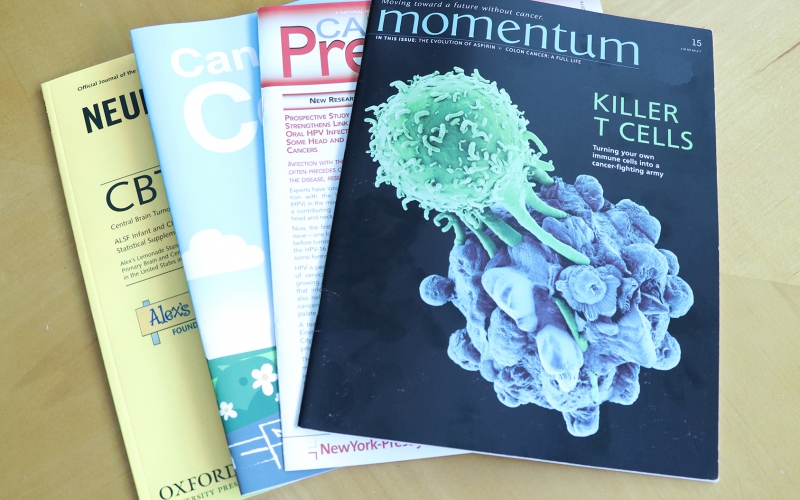The Childhood Cancer Blog
The Childhood Cancer Blog
For childhood cancer researchers, publishing in a scientific journal is not just about the prestige and accomplishment. Publishing is one of the key ways scientists can collaborate and move closer to breakthroughs and cures for children.
“The purpose of research is the generation of new knowledge. If research is kept private and placed in a drawer then it is useless,” said Dr. Adolfo Ferrando of Columbia University, who published his research about a mutation that drives the relapse of acute lymphoblastic... Read More

Zach (pictured above, at age 10) battled a hard-to-treat type of lymphoma.
by Trish Adkins
Childhood lymphoma arises from the immune system cells and occurs when those cells grow in an uncontrolled and uncoordinated way. While it shares some similarities with leukemia, lymphoma often settles in the lymph nodes of the body, instead of in the bloodstream.
Each type of lymphoma is named by its cell of origin and this dictates treatment protocol. The good news: the most common types of lymphoma (Hodgkin, Non-Hodgkin, Burkitt) have relatively high cure rates as compared to other types of childhood cancer.
The bad news: cure rates are not 100-... Read More

Dr. Glenson Samuel with Malina Cole, one of his patients. Malina volunteered to be part of a study looking for biomarkers for Ewing sarcoma.
Exosomes could hold the key to improving outcomes in patients with Ewing sarcoma.
by Trish Adkins, ALSF
Thirty years ago, scientists discovered small particles floating outside of cells called exosomes. These particles were thought to be cellular garbage cans that served to clean up any waste produced by cells. But now, researchers, like ALSF Young Investigator Grantee Glenson Samuel, MD of Children’s Mercy Kansas City, are working to understand how exosomes could hold the key to improving outcomes in... Read More
Pages



